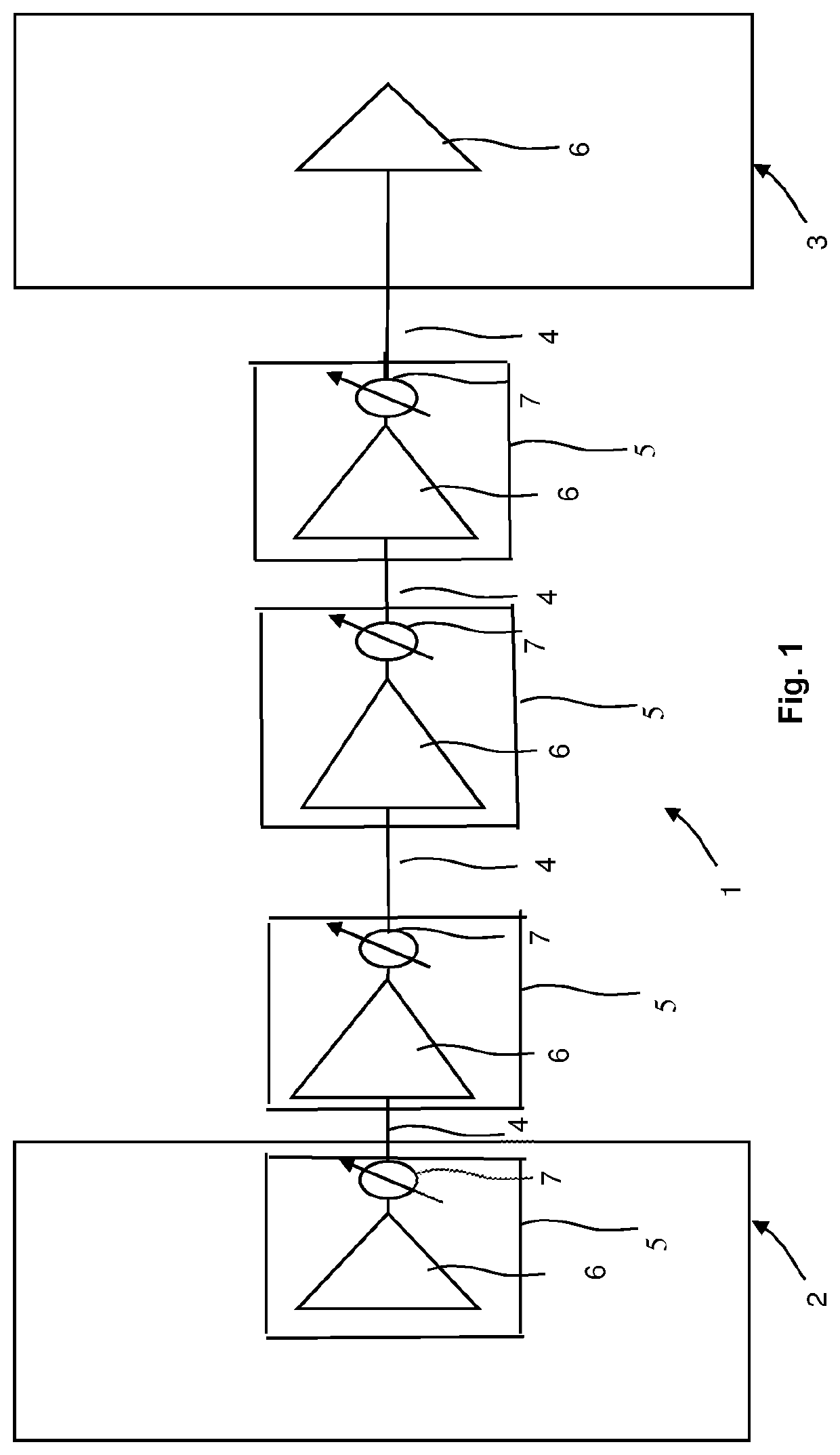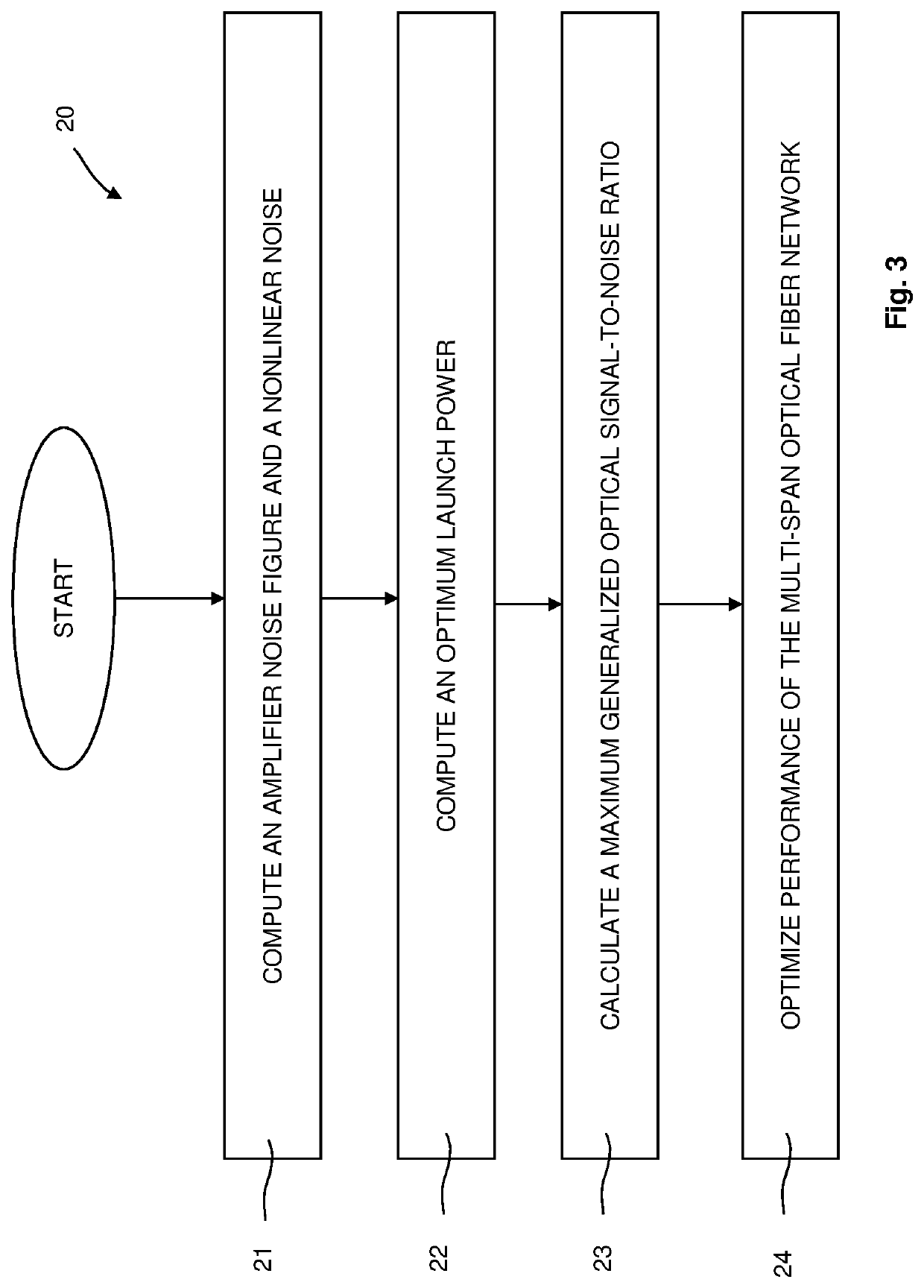Method and network control device for optimizing performance of a multi-span optical fiber network
a multi-span, optical fiber technology, applied in the direction of electromagnetic network arrangement, transmission monitoring, optical transmission with multiple stages, etc., can solve the problems of reducing the available transmission rate, reducing the optimum launch power, and high power launched into the fiber causing nonlinear distortion
- Summary
- Abstract
- Description
- Claims
- Application Information
AI Technical Summary
Benefits of technology
Problems solved by technology
Method used
Image
Examples
Embodiment Construction
[0041]FIG. 1 illustrates an example section 1 of an optical fiber network. The network is a wavelength-division multiplexing (WDM) Network.
[0042]As shown in FIG. 1, an ingress WDM node 2 is connected to an egress WDM node 3 via spans 4 of optical fiber. The spans 4 of optical fiber are coupled via optical amplifiers 5. An amplifier 5 in the ingress node 2 is optically coupled to the first span 4 of optical fiber. An amplifier 5 in the egress node 3 is optically coupled to the final span 4 of optical fiber.
[0043]The optical amplifiers 5 shown in FIG. 1 are optical amplifiers with independent gain and output power controls and amplifier noise figure dependence on amplifier gain. In this regard, FIG. 1 also shows variable-gain amplifier 6 and corresponding variable optical attenuators (VOA) 7, wherein the output power is respectively controlled using the respective variable optical attenuator 7. Here, the actual amplifier 6 and the variable optical attenuator 7 are respectively shown b...
PUM
 Login to View More
Login to View More Abstract
Description
Claims
Application Information
 Login to View More
Login to View More - R&D
- Intellectual Property
- Life Sciences
- Materials
- Tech Scout
- Unparalleled Data Quality
- Higher Quality Content
- 60% Fewer Hallucinations
Browse by: Latest US Patents, China's latest patents, Technical Efficacy Thesaurus, Application Domain, Technology Topic, Popular Technical Reports.
© 2025 PatSnap. All rights reserved.Legal|Privacy policy|Modern Slavery Act Transparency Statement|Sitemap|About US| Contact US: help@patsnap.com



